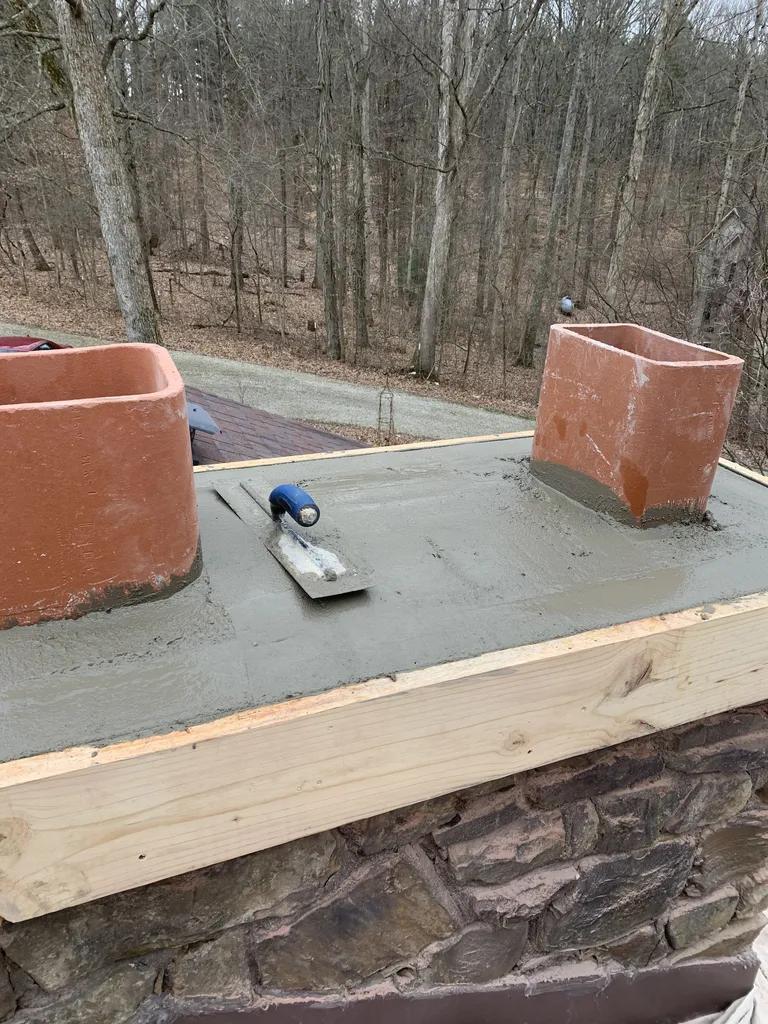Chimneys and fireplaces are not only functional elements in a home, but they also add a sense of warmth and coziness to any living space. However, like any other part of a house, chimneys and fireplaces require regular maintenance and repair to ensure they operate safely and efficiently. In this comprehensive guide, we will explore the essential steps and considerations for properly repairing and maintaining chimneys and fireplaces, helping homeowners protect their investment and keep their homes safe and comfortable.
Table of Contents
- – Common Chimney and Fireplace Issues to Look Out For
- – Importance of Regular Maintenance and Inspection
- – DIY vs Professional Repair Options
- – Best Practices for Chimney and Fireplace Safety
- Q&A
- Future Outlook

– Common Chimney and Fireplace Issues to Look Out For
When it comes to maintaining your chimney and fireplace, it’s essential to be aware of common issues that may arise. One of the most common problems is creosote buildup, which can lead to chimney fires if not properly cleaned. Another issue to watch out for is cracks or damage to the chimney structure, which can compromise its safety and functionality. Additionally, issues with the fireplace itself, such as malfunctioning dampers or flue blockages, can impact the efficiency of your fireplace and pose a safety hazard.
To keep your chimney and fireplace in top condition, it’s important to schedule regular inspections and cleanings by a professional. Look out for signs of smoke backing up into your home, as this could indicate a blocked chimney or flue. Keep an eye out for any strange odors or unusual noises coming from your fireplace, as these can also be indicators of underlying issues. By staying vigilant and proactive in addressing these common problems, you can ensure the safety and longevity of your chimney and fireplace.

- Importance of Regular Maintenance and Inspection
Regular maintenance and inspection of your chimney and fireplace are essential to ensure both safety and efficiency. Neglecting these tasks can lead to serious issues such as chimney fires, carbon monoxide leaks, and inefficient heating. By scheduling regular maintenance and inspections, you can catch potential problems early and prevent them from escalating into costly repairs.
During a chimney and fireplace inspection, a professional will check for any signs of damage, creosote buildup, blockages, or other issues that could impact the safety and performance of your system. Regular cleaning and maintenance can help extend the lifespan of your chimney and fireplace, saving you money in the long run. Don’t wait until it’s too late – prioritize regular maintenance and inspection to keep your home safe and cozy.

– DIY vs Professional Repair Options
When it comes to repairing your chimney and fireplace, there are two main options to consider: DIY or hiring a professional. Both options have their advantages and drawbacks, so it’s important to weigh them carefully before making a decision.
DIY Repair:
- Cost-effective option
- Allows for hands-on experience and satisfaction of completing the repair yourself
- May not be as thorough or effective as professional repair
Professional Repair:
- Expertise and experience in chimney and fireplace repair
- Ensures the job is done correctly and safely
- Can be more costly than DIY option

– Best Practices for Chimney and Fireplace Safety
Regular maintenance and repair of your chimney and fireplace are essential to ensure the safety and functionality of your home heating system. One of the best practices for chimney and fireplace safety is to schedule an annual inspection by a professional chimney sweep. During the inspection, the sweep will check for any buildup of creosote, which is a highly flammable substance that can lead to chimney fires if not properly removed.
Another important aspect of chimney and fireplace safety is to make sure that your chimney cap is in good condition. A chimney cap helps to prevent debris, animals, and rainwater from entering your chimney and causing blockages or damage. Additionally, always remember to burn only seasoned hardwoods in your fireplace, as they produce less creosote and burn more efficiently. By following these best practices, you can help ensure the safety and longevity of your chimney and fireplace.
Q&A
Q: What are some common signs that indicate the need for chimney and fireplace repair?
A: Some common signs include a smoky smell inside the house, water leaks around the fireplace, cracked or damaged chimney bricks, and excessive soot buildup.
Q: How often should chimney and fireplace inspections be performed?
A: It is recommended to have your chimney and fireplace inspected at least once a year to ensure they are in good working condition and to prevent potential fire hazards.
Q: What are some DIY maintenance tasks that homeowners can perform to keep their chimney and fireplace in good condition?
A: Homeowners can regularly clean the fireplace and chimney, monitor for any signs of damage or deterioration, and ensure proper ventilation to enhance the efficiency of the fireplace.
Q: What are the potential dangers of neglecting chimney and fireplace repair?
A: Neglecting chimney and fireplace repair can lead to chimney fires, carbon monoxide poisoning, and structural damage to the home.
Q: How can homeowners find reputable chimney and fireplace repair professionals?
A: Homeowners can ask for recommendations from friends and family, check online reviews, and ensure the professionals are licensed and insured before hiring them for chimney and fireplace repair services.
Future Outlook
In conclusion, maintaining the integrity of your chimney and fireplace is crucial to the safety and functionality of your home. By following the essential guide to chimney and fireplace repair outlined in this article, you can ensure that your heating system continues to operate efficiently and safely for years to come. Remember, it is always best to consult with a professional chimney sweep or fireplace repair specialist for any major repairs or maintenance tasks. Thank you for reading, and remember to stay safe and warm this winter.


